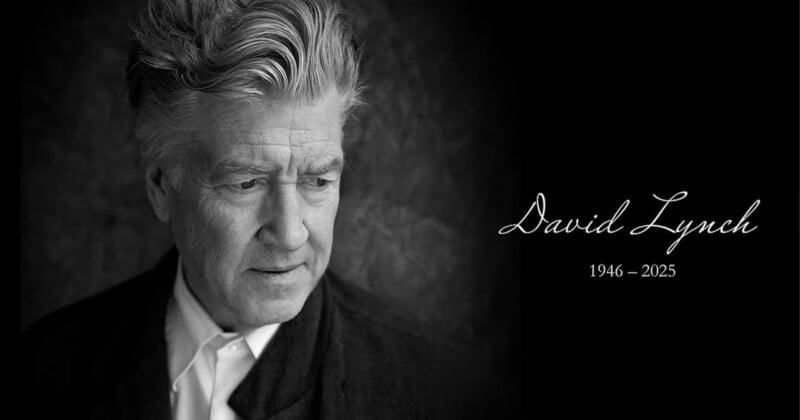 Director David Lynch passed last week.
Director David Lynch passed last week.“When I saw Blue Velvet for the first time, it changed my life,” wrote photographer Gregory Crewdson last week as he reacted to the news that famed director David Lynch had died at age 78.
Here at PetaPixel, we don’t typically write obituaries for directors but David Lynch is the exception to that rule. The enigmatic filmmaker behind Eraserhead, Mulholland Drive, and Twin Peaks, profoundly impacted not only cinema but also photography.
His surreal Americana aesthetic, which fuses the uncanny with the mundane, has inspired countless photographers to push boundaries in composition, lighting, and subject matter. Lynch’s ability to imbue ordinary settings with dreamlike, sometimes unsettling qualities profoundly affected how certain photographers approach storytelling through imagery.
Blue Velevet, the 1986 film referenced by acclaimed photographer Gregory Crewdson, juxtaposes idyllic suburban settings with sinister undercurrents, blending rich, vibrant colors with deep shadows.
The line between Lynch’s work to Crewdson’s is a straight one: Crewdson’s meticulously staged, cinematic images often depict suburban settings imbued with mystery, unease, and melancholy. Much like Lynch, Crewdson transforms ordinary environments into something extraordinary, using dramatic lighting, eerie stillness, and surreal scenarios that evoke a sense of otherworldliness.
Another photographer impacted by Lynch is Todd Hido. His haunting photographs of suburban homes and empty interiors echo Lynch’s ability to make the familiar unsettling. Hido often shoots nocturnal scenes, featuring glowing windows and foggy streets, evoking the same eerie atmosphere found in Lynch’s Blue Velvet or Twin Peaks. Both artists explore the tension between domestic life and hidden darkness. Hido took to Instagram to share a series of images he says are directly influenced by Lynch.
Photography’s Impact on David Lynch
Creative influences are a two-way street and Lynch himself was inspired by photographers from previous generations. One such artist is William Eggleston whose color photography Lynch has cited as a key influence on his own visual style. Eggleston’s work also deals with off-kilter depictions of American life.
Another photographer Lynch admired is Diane Arbus. “She had depression and or mental problems. I love mental problems,” Lynch told The New York Times in 2004. The director often cited Arbus as an influence on his visual style. Arbus is renowned for her stark, intimate portraits of people on society’s fringes, capturing their humanity in unsettling yet empathetic ways.
Lynch was no stranger to a still camera himself. He pursued photography his entire career, releasing at least five books that explore his personal vision and express the themes that recur in his cinematic work. Lynch had an affinity for analog photography and the unpredictability of the darkroom process. Like his films, his photographic works are created through a deliberate, hands-on approach, and he embraces the imperfections that come with working with film.
Lynch’s death was announced by his family via his official Facebook page on Thursday. The auteur’s voracious smoking habit meant that last year he revealed he was battling emphysema, a chronic lung disease.
“There’s a big hole in the world now that he’s no longer with us,” says his family. “But, as he would say, ‘Keep your eye on the donut and not on the hole’.”






 English (US) ·
English (US) ·